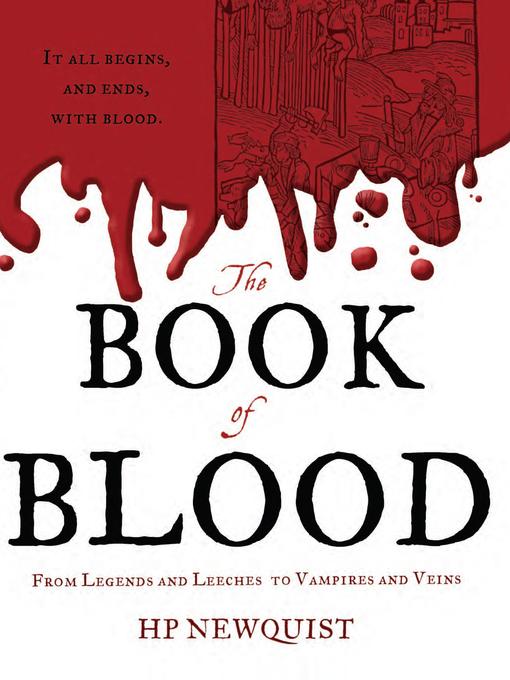
The Book of Blood
From Legends and Leeches to Vampires and Veins
فرمت کتاب
ebook
تاریخ انتشار
2012
Reading Level
7
ATOS
8.6
Interest Level
4-8(MG)
نویسنده
HP Newquistناشر
HMH Booksشابک
9780547822693
کتاب های مرتبط
- اطلاعات
- نقد و بررسی
- دیدگاه کاربران
نقد و بررسی

June 18, 2012
“Blood looks too simple to be so important: just a bright splash of liquid that seems as if it isn’t much different from paint or fruit juice or cherry-colored water.” In 11 concise chapters, Newquist (Here There Be Monsters) demystifies one of the most elemental and (literally) vital components of life as we know it. After
an overview of the complex makeup of blood, Newquist dives into humankind’s history with, beliefs about, and study of blood, including missteps and misconceptions along the way; both ritual and medical bloodletting are discussed, the latter persisting as a method of treatment well into the 1800s (“George Washington was treated with bloodletting—and then died from it”). Newquist goes into detail to explain how blood moves through the human body and the critical role it plays in keeping us alive, also touching on hematophageous (blood-drinking) animals and vampire legends. Photographs and period illustrations appear throughout, and blood-spattered pages play into the subject matter’s potential for ickiness, even while Newquist makes it clear that blood is worthy of fascination, not fear. Ages 10–14. Agent: Ken Wright, Writers House.

June 1, 2012
Newquist expands considerably on the premise that "[t]here is more to blood than that it's red and kind of gross" without neglecting to keep the "kind of gross" parts in view. Along with a suitably gore-spattered parade of Aztec and other bloodthirsty gods and blood rituals throughout history, the author takes quick looks at various kinds of blood in the animal kingdom and at vampires in modern pop culture. He also recaps the development of our understanding of blood and the circulatory system from ancient times through the scientific revolution, and thence on to modern uses for blood in medicine and research. In considerably more detail, though, he tallies blood's individual components and the specific functions of each in keeping our bodies alive and healthy. Aside from a debatable claim that "[e]verything you put in your body ends up in your blood," this transfusion of information offers a rewarding experience to readers whether they're after the specific differences between blood types and other biological data or just gore's icky lore. It's nicely enhanced by a generous array of photographs, microphotographs and artists' renderings. A closer focus on biology than bloodshed makes this a natural companion for Tanya Lloyd Kyi's more anthropological Seeing Red: The True Story of Blood (2012). (bibliography, Web sites) (Nonfiction. 10-13)
COPYRIGHT(2012) Kirkus Reviews, ALL RIGHTS RESERVED.

October 1, 2012
Gr 5-8-Blood, writes Newquist, "is one of the most fascinating and fabled substances in history." In this compendium, readers will learn about the red fluid's biological function as well as its historical and cultural significance. Several chapters cover its importance in ancient cultures and explain how our knowledge about its role in the body developed over time. Information about early medical practices such as bloodletting (including the use of leeches) will grab students' interest, as will the sections on hematophagous (blood-drinking) animals and vampire legends. The chapters on the physiology of the circulatory system and the components of blood are more readable than those in many textbooks. The conversational tone and the faux blood-spattered pages, replete with sidebars, color photos, archival drawings, and medical illustrations, are sure to pull in readers. Unfortunately, there are no source notes to support blanket statements such as, "Everything you put in your body ends up in your blood," and "Your blood is more responsible for keeping you alive than anything else in your body." This book's content is similar to that in Trudee Romanek's Squirt: The Most Interesting Book You'll Ever Read About Blood (Kids Can, 2006), although it covers some topics in greater depth and has more of a narrative format.-Jackie Partch, Multnomah County Library, Portland, OR
Copyright 2012 School Library Journal, LLC Used with permission.

























دیدگاه کاربران